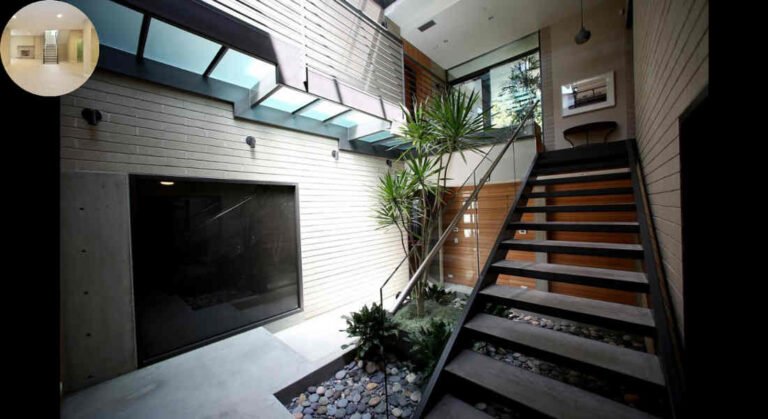California homes typically lack basements due to a combination of climatic, geological, architectural, and economic factors. Unlike colder regions where basements are common to place foundations below the frost line, California’s mild climate means there is no need for deep footings to prevent frost damage, making basements less necessary from a structural standpoint.
What is the Basement Dilemma?
The “Basement Dilemma” refers to the curious absence of basements in many California homes. Unlike other states, where they are commonplace, Californians find themselves grappling with a lack of subterranean space.
Several factors contribute to this dilemma. Seismic activity is a significant concern here; building codes often restrict underground construction for safety reasons. The terrain also plays a role—high water tables and rocky soil can complicate basement installations.
Furthermore, California’s mild climate encourages outdoor living rather than relying on additional indoor spaces like basements. Homeowners prioritize access to backyards or patios over digging deep into the ground.
As a result, many residents face challenges when it comes to storage and extra living areas. This unique situation leaves them searching for creative solutions that fit their lifestyle without traditional basement options.
The History of Basements in California Homes
Basements have a complicated history in California. Traditionally, homes built during the Gold Rush era often featured basements for storage and protection from the elements. These spaces served as essential areas for miners to stash their treasures.
As time went on, architectural styles evolved. The mid-20th century saw a shift towards single-story homes that favored open layouts. This change reflected not just design preferences but also the unique geography of California.
Earthquakes played a significant role too. Concerns about soil stability and seismic safety made digging deeper into the ground less appealing for builders. Consequently, many homeowners opted out of basement construction altogether.
While some regions still embrace this subterranean space, it’s clear that basements are far from standard in California’s diverse housing landscape today.
You may also read (understanding femas role in home inspections).
Reasons for the Lack of Basements in California
California’s unique geography plays a significant role in the absence of basements. With its frequent seismic activity, building codes prioritize structural integrity over below-ground spaces. Excavating for basements can compromise stability, leading to costly adjustments.
The state’s climate also contributes to this phenomenon. Mild temperatures and minimal snowfall mean less need for extra storage or living areas underground. Homeowners often prefer outdoor spaces like patios instead.
Many homes are designed with open-concept layouts that utilize vertical space rather than digging down.
Soil conditions across California vary greatly, making basement construction challenging in many regions. This combination of factors creates a culture where basements simply aren’t standard practice in most Californian homes.
Pros and Cons of Having a Basement in California
Basements can offer unique advantages for California homeowners. They provide additional living space, perfect for a home office or guest suite. With thoughtful design, a basement can become an inviting area that adds value to your property.
However, there are challenges too. The state’s geology and seismic activity raise concerns about safety and structural integrity. Flooding is another risk, especially in areas prone to heavy rain.
Energy efficiency is also a factor. Basements can be cooler than the rest of the house during hot summers but may require extra heating in winter months.
Maintenance might be more demanding as well. Moisture control and ventilation need constant attention to prevent mold growth or musty odors.
Weighing these pros and cons helps clarify whether adding a basement aligns with your lifestyle needs and preferences in California’s diverse climate.
You may also read (does florida home insurance cover hurricane damage).
Alternatives to Basements for Storage and Living Space
For homeowners in California looking for alternatives to basements, there are several inventive options. One popular choice is utilizing attics. These spaces often go underused but can be transformed into cozy retreats or ample storage areas with proper insulation and ventilation.
With some creativity, a garage can become an efficient multifunctional space that serves as both a workshop and additional living area.
Outdoor sheds are also gaining popularity for storage needs. They provide a weatherproof solution without occupying valuable indoor real estate.
This not only saves space but adds character to your home while keeping it organized.
Off-site storage units offer flexibility for those who need extra space temporarily or long-term without cluttering their homes.
Tips for Creating More Storage Space in Your Home
When living in California, space can often feel limited. If a basement isn’t part of your home, here are some effective tips to maximize storage and create more usable areas.
Start with decluttering. Donate or discard items you no longer need regularly. This simple step frees up valuable space.
Consider multifunctional furniture. Items like ottomans that double as storage or beds with built-in drawers can help keep clutter at bay while maintaining style.
Utilize vertical space by adding shelves on walls. High shelving units draw the eye upward, making a room feel larger while providing ample storage for books and decorative items.
Labeling boxes is essential for organization. Clear bins allow you to see contents easily, preventing unnecessary digging when searching for specific items.
Under-bed storage is another smart solution. Utilize containers designed to slide under the bed for seasonal clothes or extra linens—great choices to utilize otherwise wasted space.
If possible, think about outdoor options too. Sheds or garden benches with hidden compartments can provide additional places to store tools and gardening supplies without taking up indoor space.
Keep in mind that creativity is key when maximizing every inch of your home’s layout! With these strategies, turning any area into an organized haven becomes achievable—even without a traditional basement structure.
You may also read (does central air conditioning really boost home value).
